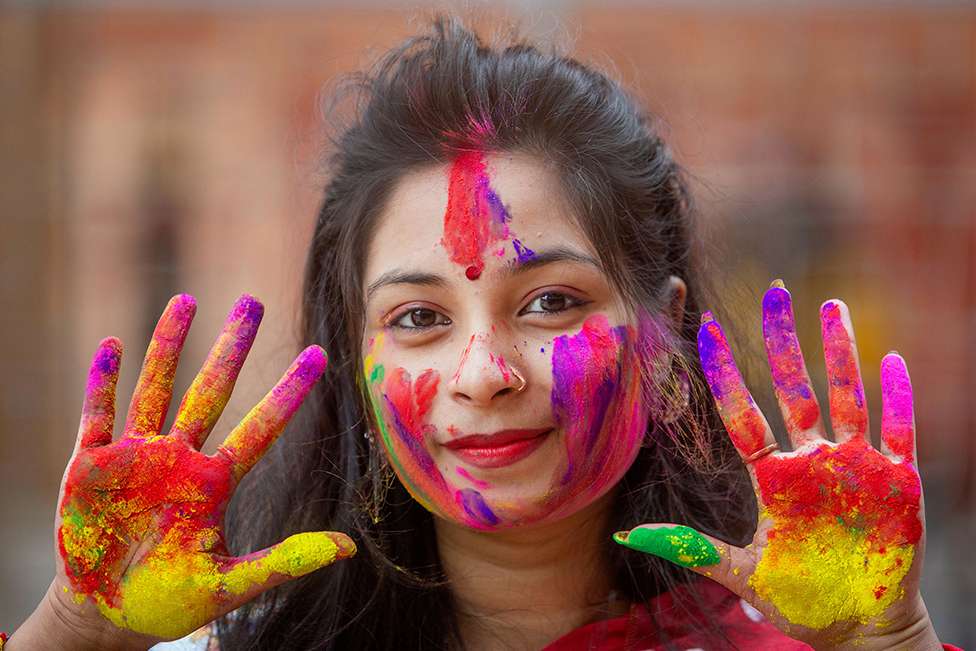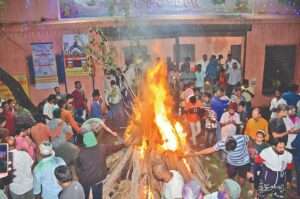
Colors of Tradition: The Story of Holi
Colors of Tradition: The Story of Holi
On March 25, 2024, Holi, the vibrant Hindu festival of colors, was celebrated with joy and enthusiasm across India and other parts of the world. Holi, also known as the Festival of Spring, marks the arrival of the spring season and the triumph of good over evil. During this festive occasion, people come together to play with colored powders, known as gulal, and drench each other with water, spreading happiness and cheer.
Families and friends gather to enjoy festive foods, sweets, and music, creating a lively atmosphere of celebration. Holi is a time for forgiveness, reconciliation, and the strengthening of bonds, as people set aside differences and embrace each other with love and warmth. Overall, Holi on March 25, 2024, was a day filled with colorful festivities and cherished moments shared with loved ones.

Why Holi is celebrated-
Holi is a vibrant and joyous Hindu festival celebrated primarily in India and Nepal, although it’s also observed in other parts of the world where there are significant Hindu communities. The festival typically falls in March, marking the arrival of spring and the end of winter.
There are several reasons why Holi is celebrated:
- Victory of Good over Evil: One of the primary legends associated with Holi is the triumph of good over evil. The story of Prahlad and Holika is often cited. Prahlad, a devotee of Lord Vishnu, was saved from the evil intentions of his father’s sister, Holika, who had a boon protecting her from fire. However, Prahlad’s devotion protected him, and Holika was burnt instead.
- Welcoming Spring: Holi is also celebrated as a festival of spring, symbolizing the end of the gloomy winter and the arrival of vibrant colors and life. People celebrate by throwing colored powders (gulal) and water at each other, signifying the blossoming of new beginnings and renewal.
- Social Harmony: Holi is a festival that brings people together, breaking down social barriers and promoting unity and harmony. During Holi, people of all backgrounds come together to celebrate, regardless of caste, creed, or status.

Colors of Tradition: The Story of Holi - Cultural Tradition: Holi is deeply rooted in Indian culture and tradition, with celebrations varying from region to region. It’s an occasion for families and communities to come together, share festive meals, and enjoy music and dance.
- Festive Spirit: Holi is a time of merrymaking and fun-filled activities. People indulge in singing, dancing, and feasting, spreading happiness and joy all around.
Overall, Holi is celebrated for its religious significance, cultural importance, and the sense of joy and togetherness it brings to people’s lives. It’s a time to forgive and forget past grievances, mend relationships, and start afresh with positivity and hope for the future.
Why holika dahan is celebrated
Holika Dahan is celebrated as the first day of Holi. On this day, people worship Holika and perform her ritualistic burning. Holika Dahan holds significance as a symbol of protection and victory, for which it is revered. This day is associated with the story of Prahlad, a devotee of Lord Vishnu, and his arch-enemy Holika.
In the legend of Holika Dahan, the protection of Prahlad by Lord Vishnu’s grace is highlighted. Holika, the sister of the demon king Hiranyakashipu, sits with Prahlad in the fire intending to kill him, as she possessed the boon of immunity from fire. However, Prahlad remains unharmed due to the blessings of Lord Vishnu, while Holika is consumed by the flames.
Holika Dahan marks the auspicious beginning of Holi, and people celebrate it with joy and enthusiasm alongside their families and communities. Following Holika Dahan, the next day, known as Holi, is celebrated with the playful throwing of colors, exchanging sweets, and spreading happiness. The significance of Holika Dahan lies in its message of religious and social harmony, along with symbolizing the start of a new journey.






